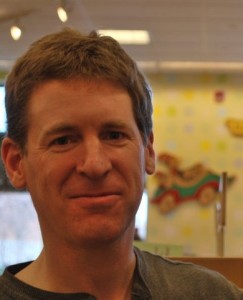by Pamme Boutselis
 For seven years, Eric Pinder lived and worked as a weather observer amidst often challenging conditions atop the 6,288-foot summit of New Hampshire’s Mount Washington. Several books resulted from those experiences, including his first book for children, “Cat in the Clouds.” He has also written books for readers of all ages, “If All the Animals Came Inside,” “Tying Down the Wind,” “Life at the Top” and “North to Katahdin.” Pinder is currently working on a novel and more children’s books. Learn more at www.ericpinder.com.
For seven years, Eric Pinder lived and worked as a weather observer amidst often challenging conditions atop the 6,288-foot summit of New Hampshire’s Mount Washington. Several books resulted from those experiences, including his first book for children, “Cat in the Clouds.” He has also written books for readers of all ages, “If All the Animals Came Inside,” “Tying Down the Wind,” “Life at the Top” and “North to Katahdin.” Pinder is currently working on a novel and more children’s books. Learn more at www.ericpinder.com.
How did your first book, “Life at the Top,” come about and what was the process like in getting it published?
You have to know about the world to write about it, so the more places you explore, the more ideas and adventures you’ll have worth writing down. I worked on a mountaintop famous for its wild weather for seven years (we called it “the highest paying job in New England”) and with a setting like that, experiences worth writing about happened almost every day: rescuing lost hikers, or having a raven almost land on my shoulder, or getting pushed like a hockey puck across the icy observation deck by a hurricane-force wind. It was exhilarating but exhausting work. And it gave me enough stories to fill a book.
I wrote up a book proposal and outline, with one sample chapter, and pitched the idea to a publisher. A couple months later, they said yes and gave me a deadline. About a year after that, the book rolled off the printing presses.
Have you always written?
I grew up in a house full of books and always loved to read, and that made me want to see a book of my own on the shelf someday. I remember making up science fiction stories about a planet called Qopple-Qopple in elementary school. I didn’t start writing about nature and mountains, though, until a college class called American Landscapes introduced me to books by Edward Abbey, Annie Dillard and John McPhee. They say you are what you eat. In my case, I guess I write what I read.
With four nonfiction books under your belt, what prompted you to try your hand with a children’s book?
A funny thing happened a few years ago: all my friends starting having kids. Suddenly their houses were full of books by Seuss and Prelutsky. I read some old favorites, and some newer picture books I’d never heard of before, and thought, wow, these are pretty good. There’s a lot of wordplay in books for children, and that makes them both challenging and fun to write.
 You certainly had a natural story to share about Nin in “Cat in the Clouds.” Was the transition difficult in writing in this new format?
You certainly had a natural story to share about Nin in “Cat in the Clouds.” Was the transition difficult in writing in this new format?
Picture books are meant to be read aloud, performed, so the sound of the words is very important. It’s like writing poetry: every single syllable has to count.
Picture book writers also need to make sure our stories appeal to two audiences: the child listener and the grownup who reads the book out loud. A typical novel only gets read once or twice, but a parent will have to read a picture book out loud over and over…and over; sometimes hundreds of times. So the story needs staying power, and it needs to appeal on multiple levels to both audiences. Parents have been known to “misplace” books that their kids love but that they can’t bear to reread one more time.
Your next book, “If All the Animals Came Inside,” offers a comical rhyming tale illustrated by Marc Brown. What was the inspiration for this book and how did you connect with Marc Brown?
Stories with an animal are always big hits with children, from The Very Hungry Caterpillar to the toad in Tuck Everlasting. So, I thought, what could be better than a story about all the animals?
Publishers almost always choose the illustrator. They did tell me at one point, early in the process when the dotted lines were still being signed on the contracts, “We have an illustrator in mind. We can’t tell you who it is yet, but we can tell you you’ll be excited.” And they were right.
Your audience certainly expanded with the publication of your kids’ books. What are some of the new experiences you have had as a result?
A four-year-old, at his mom’s urging, started to spell out his name so I could sign his book. He remembered all the letters except one. He scrunched up his face, thought hard and finally called the letter “two bumps.” Since we already call w “double-u,” I think we should officially change the letter m to “two bumps.”
At another book signing, a little girl about three years old kept coming back to my table and turning the pages of If All the Animals Came Inside. Her mom told her regretfully that they couldn’t buy another book because they were out of money. So the little girl rummaged in her pockets, found a quarter, grinned and said, “Now we can!” She got the book at a really good discount. Got to encourage those early readers.
What are some of the things you struggle with as a writer?
Getting started on a new project is the hardest part for me. It seems to take forever to gather momentum and fill that first blank page. After that, it gets fun. But staring at that first blank page is torture. So I have to force myself to do it. I know that if I keep working and don’t give up, no matter how painful it is at first, eventually something worthwhile will emerge.
If the Muses aren’t cooperating, I do this: put on an hour or two of background music, something non-distracting like Bach or Mozart’s horn concertos, and say, “Okay, you can’t get up from this chair till the music stops. No emails, no games, no Facebook. Your only choices are write or do nothing,” Usually out of sheer boredom, that forces me to write. And sometimes I get on a roll. Sometimes I look up after dozens of pages and realize it’s already dark out and the music must have stopped hours ago.
What do you wish you had known sooner?
There are some things I’m glad I didn’t know sooner. If I’d known how many revisions it would take before North to Katahdin got published, for example, I’d probably never have started it.
I wish I had started writing books for children sooner. All the years I struggled to write bad science fiction might have been better spent on honing my rhyme and meter.
It’s a cold, winter night and you’re snowbound at home. Is there a favorite book you’ll pick up for a re-read?
Two books I keep coming back to are Herman Wouk’s The Winds of War and Tolkien’s Lord of the Rings. I’m not sure why. In Tolkien’s case, it’s probably the depth and detail of his world-building that impresses me; you get a sense that he planned out every pebble and blade of grass the whole way from Hobbiton to Mordor. It’s fun to spend time exploring another world. In Wouk’s case, I guess I enjoy spending time with the characters.
Do you have any advice for writers hopeful for publication?
Read a lot, and write every day, if you can. But everyone says that. I think two other things are equally important: Don’t hurry and don’t give up. Like many aspiring writers, I was eager to get published, in a rush. Some of those early works embarrass me now. Another six months of revision would’ve made them much better. So don’t hurry. That story you finished last week will be even better a year from now.
Don’t give up. Everyone gets rejected. The most successful writers are the ones with the thickest skins.
Category: